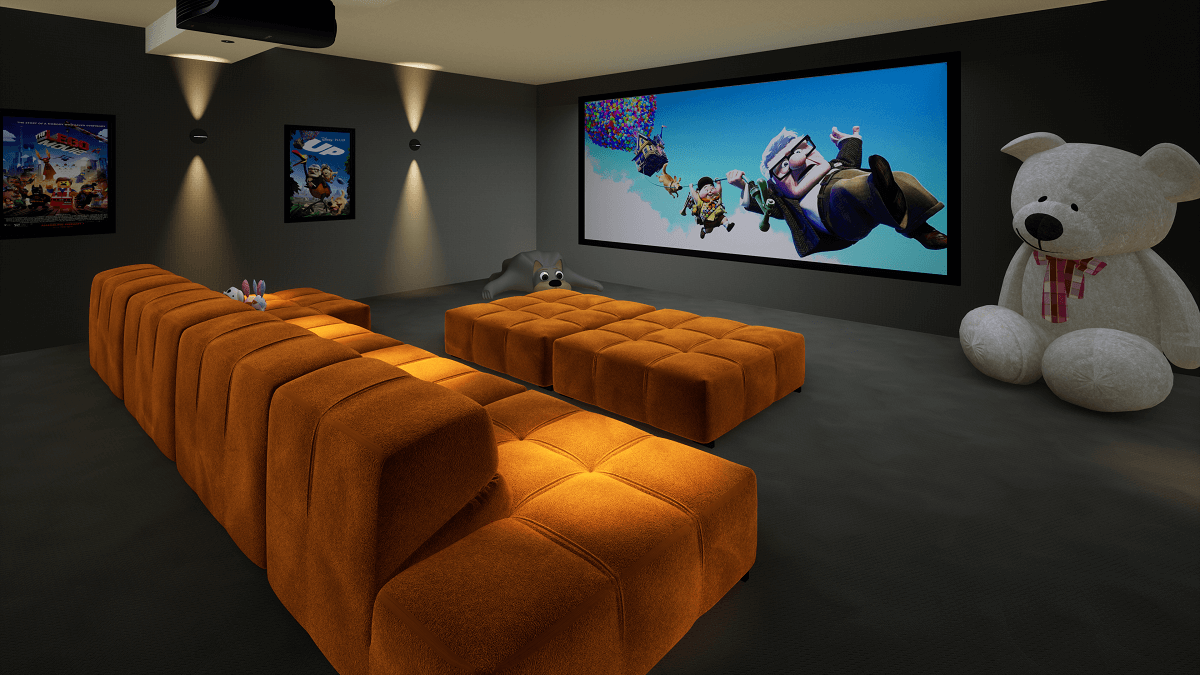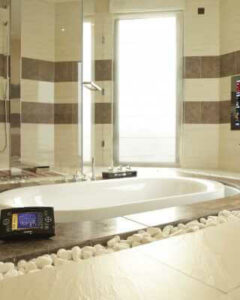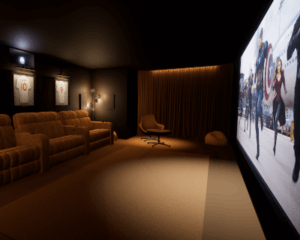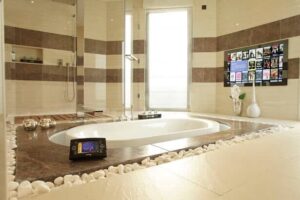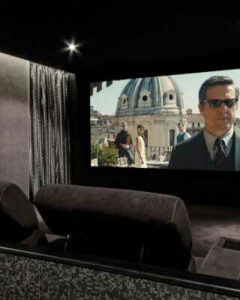How to Choose a Home Cinema Projector Screen
How to Navigate the Huge Array of Projector Screen Options for Home Cinema Use!
We have a huge range of Projector Screen options available for home cinema designs and we thought an article laying out the differences and explaining why we choose certain models over others might be handy for prospective clients and also people looking to DIY (which is often the first experience people have of a proper home cinema system).
Fixed screen or retractable?
This is always the first question we ask ourselves and is crucial to delivering a good cinema room. The thought process is laid out below.

Benefits of fixed:
- The screen is always in the right place – no delays waiting for it to drop and it is always in a millimeter perfect location.
- Can go bigger than a normal retractable screen

Benefits of Retractable:
- Can be easier to integrate in to a multi-use room as invisible when not in use.
- Does not need to be close to a wall.
HD or Widescreen?
This is a big question and one which is often overlooked. Widescreen images are much wider and less tall than their HD versions – HD resembles a normal TV picture but there is in fact a much wider option available. Again we have a dedicated article on Movie Aspect ratios to help you decide. Often the size of the room will dictate screen choice – a large room with low head height might require a widescreen version if a big screen is required – sometimes it just isnt possible to fit a HD screen and a 2.35 format is much less tall for a given width.
Masking or non Masking?
First of all masking screens use black velvet panels to hide elements of the screen which are not in use. For instance watching a film meant for widescreen on an HD screen can introduce bars at the top and bottom of the screen – masking covers these bars with black velvet which ensures any light bleed from the main image doesn’t distract and also provides a very black area which aids contrast of the main image. Masking is available for the top and bottom, both sides of the screen – even all four sides at once – for both fixed and retractable screens.
Curved or Flat?
Curved TVs were a bit of a gimic and didn’t really take off due to the compromises they introduced. In a projector screen they make lots more sense – making the visual elements of a home cinema be more immersive by wrapping the screen around you and ensuring the head and eyes have less distance to move when viewing the big screen. Curved spaces also perform better acoustically so we tend to mirror the curve of the projector screen on the back wall – which looks good and sounds amazing! Our fabric walling contractors can easily install a smooth finish on to curved walls which also allows us to hide speakers and acoustic treatments. This home cinema in Megeve, France is a great example of this in practice.
Ensuring you have the right size Projection Screen
Choosing the right size home cinema screens is crucial to designing a successful cinema space – but it is a tricky thing to get right! Before working out sizes there are a couple of decision points – is this a dedicated cinema or a room which needs to function as a living room by day and a cinema by night? Dedicated rooms should always have a fixed cinema screen (as you can build speakers in to a void behind an acoustically transparent screen) whereas a living room could have a TV based cinema or a drop down projector screen. In some cases (where budget is not an issue) you can have both – a TV for day to day viewing with a screen which drops down for special occasions – film watching and big sporting events.
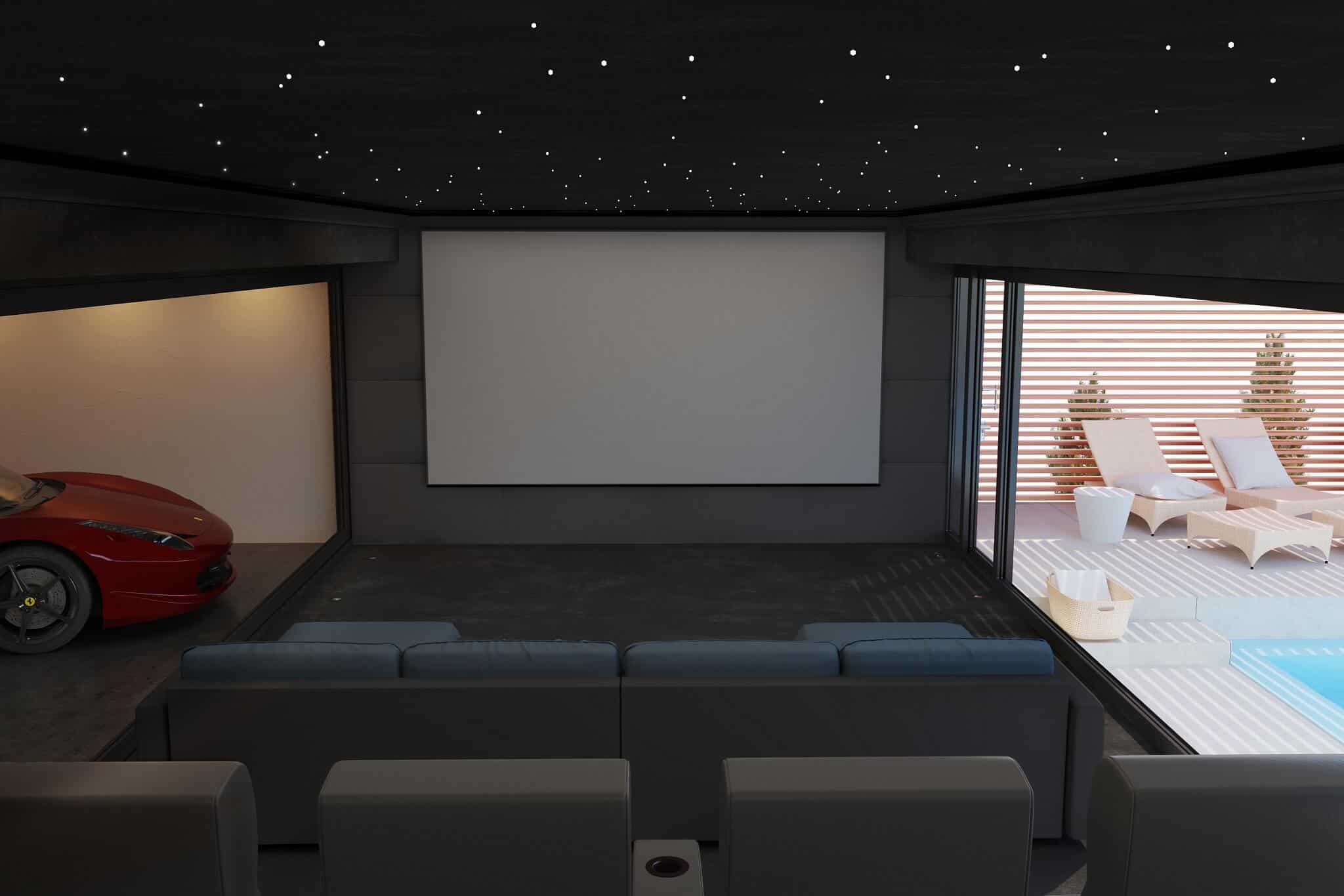
A perfectly sized Home Cinema Screen
Once the above is decided then it is on to deciding the screen size. When most people refer to the “cinema experience” they mean a screen size of at least 100″ wide (which is actually a screen with a viewable size of 254cm wide and 143cm high). To determine what will fit and work in the room firstly measure the space – most of the time we fit cinema screens to the largest wall (unless the room is wider than 4m and then it doesn’t matter!) and then arrange seating to suit. We have another blog post on home cinema seating distances – take a look at that and then come back to this article. Roughly speaking all seating should be a distance of between 1.5x to 2x screen widths away. Most rooms in the UK (unless basements) have a head height of about 2.3m which means a maximum screen size of about 150″ (a screen with a view-able image of 381cm wide x 214cm high) if this fits on the width of the wall and your seating can be around 5.5m away then you have a solution! If the room width or depth means a smaller screen then keep reducing down until the above formula works.
Just to Clarify – when we talk about a projector screen size we mean width e.g.:
Size of a home cinema projector screen = 150″ (381cm)
Projector Screen Height HD (16:9 aspect ratio) = 214cm with a diagonal of 437cm
Projector Screen Height WS (1:2.35 aspect ratio) = 161cm with a diagonal of 414cm
So as you can see a 381cm wide screen has a diagonal size of 437cm in 16:9 aspect ratio! That is huge. If you dont know the difference between HD (high definition) and WS (wide screen) then check out this post on Movie Aspect ratios.
If this is your home and you cant visualise how this big screen might look then simply get masking tape and mark it out – when stood in your usual seating position you should have a viewing angle of around 30 degrees – in practice this means you should be able to watch the entire screen without needing to turn your head from side to side as this becomes tiring. You can break this rule slightly but the room will take some getting used to and become tiring after extended viewing sessions.
Once the screen size is determined then take your wall height and subtract the screen height. Divide the resulting amount by three – in order to look balanced and work with seating we recommend a third of the space above the screen and two thirds below.
For inspiration check out our portfolio pages or view the home cinema installation pages we also offer a cinema design service where we draw the cinema room out for you.
Summary
There is a lot to choosing a home cinema projector screen but the options ensure a great result no matter the style of home cinema required. Contact Us to see how we can incorporate a home cinema in to your home.
